4WD UHF Radios & Communications - all you need to know!
Published by John on 18th Jun 2021
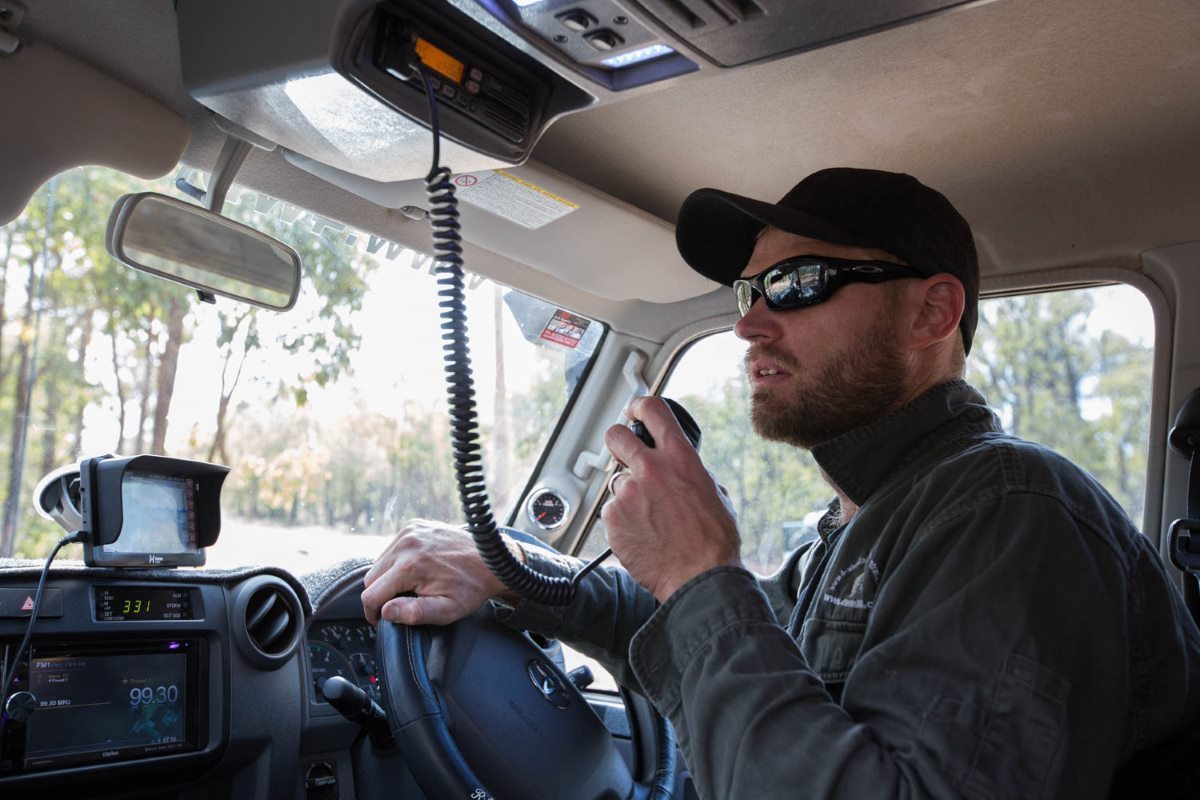
Credits: Ronny Dahl
Driving with family or friends is probably more enjoyable (well, that would depend on who your family members or mates are) and much safer if you can communicate easily with each other.
However, it'll also be handy if you can easily communicate with people outside your group.
In this post, we will cover a few critical aspects of 4wd communication when travelling and provide an overview of the most common devices.
Be sure to save this post; you never know when you may need 4wd communication tips before or during your trip.
Types of 4x4 communication
There are several communication methods available to overland or offroad drivers, and that's a positive thing since there are various communication needs.
A typical mix of types of communication would be:
- Others in a group - UHF Radio
- Other groups - UHF radio, HF radio
- Anyone in the world - satellite phones, HF radio
- Emergency services - satellite phones, HF radio, distress beacons
Let's analyse each of these methods more in details:
Just a tiny consideration about mobile phones:
They do the job for general purposes when within range, but they won't help intra-convoy chats.
UHF CB Radios

An Ultra-High-Frequency radio, more commonly known as UHF, has a set of citizen's band, or CB, frequencies available for unrestricted, public use.
It's a two-way radio system that is free to use, and you won't need a licence. Radio units are either mounted on the vehicle, with available ranges between 1km and 40km depending on terrain, or handheld, in which case you may get a range from 1 to 5 kilometres, depending on terrain. The unit and antenna's specs are contributing factors in range/quality.
CBs don't work like mobile phones for a series of reasons:
- CBs broadcast to everyone on the channel. Mobile phones are one-tone. Forget about privacy with CBs, (conversations can get very embarrassing if you are not careful)
- Mobile phones are duplex, meaning that if you and your mate are talking simultaneously, you'll hear each other voices. CBs are simplex, meaning that only one person can speak at a given time (not just your wife)
- CB transmission is free, and you only need two CB radios to communicate.
Types of UHF CB
UHF CBs come in all sorts of shapes and sizes but can broadly be categorised into in-car and handheld units.
In-car and handheld units are the most common UHF CBs:
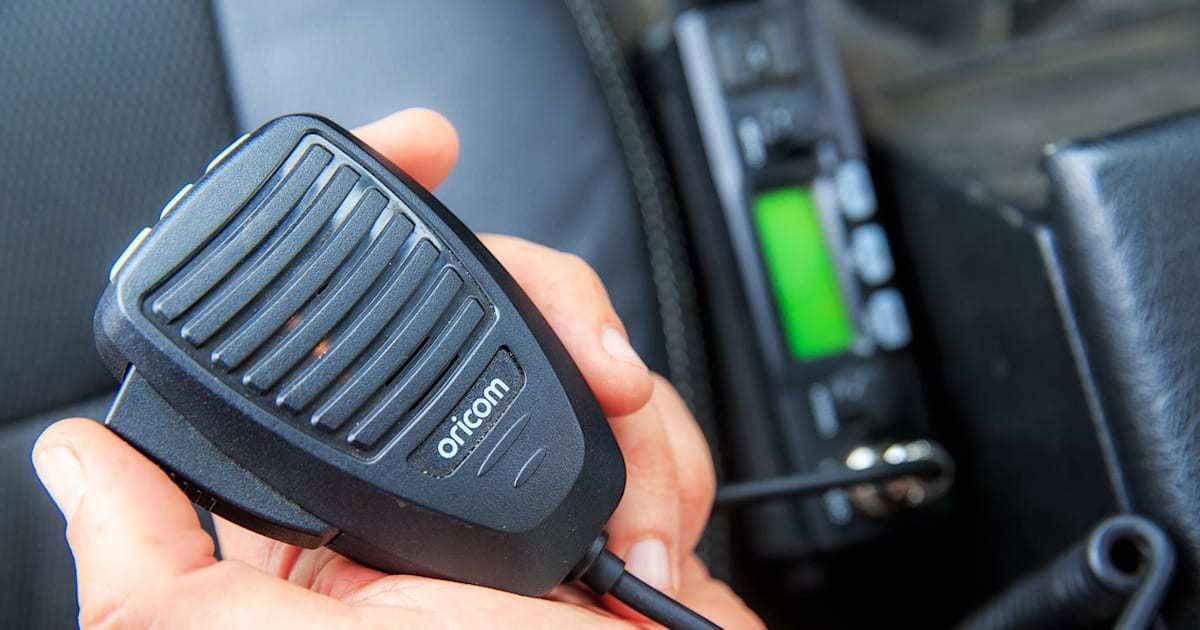
- In-car units, remote head UHF radios means the main body of the unit can be housed elsewhere, leaving only a small head unit for channel operation, volume and connection to the microphone. The mike has up/down channel keys on it too.
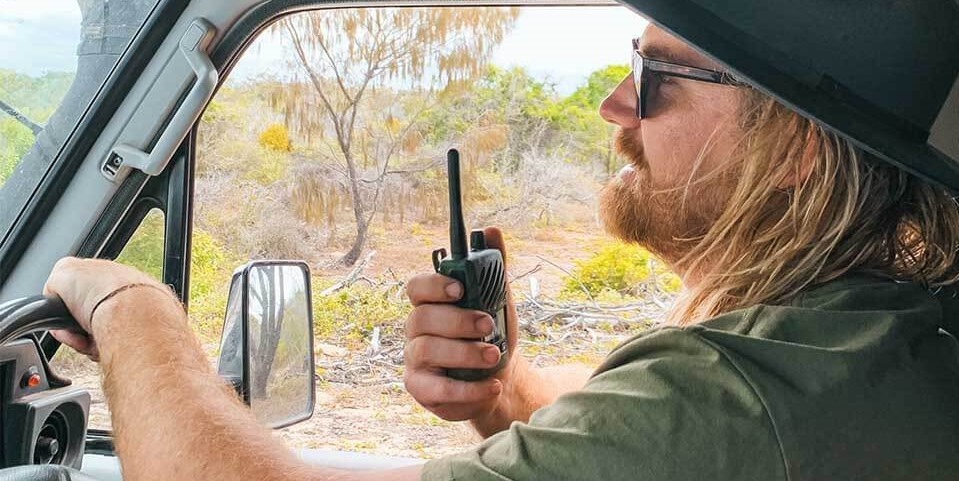
- Handheld UHF radios are excellent for coordinating recoveries and all types of communication. They are affordable and useful; however, they should be seen as complementary to, not a replacement for, in-car units, primarily as their small antennae mean range is quite limited.
How to use a CB radio
- Listen before you transmit: if you transmit simultaneously as someone else, odds are the transmissions will block each other.
- Privacy: nothing you say is private, not even with CTSS (continuous Tone-code Squelch System), which filters out listening to others but doesn't stop them listening to you.
- Speaking to strangers: It's common to run into conversations on long trips with strangers in convoys. Just be kind, and mostly you can have an interesting chat.
- Chat or safety? On a trip, chat away but leave room for urgent transmissions.
CB is very relaxed and clear; short communication is essential. Here are a few words to memorise:
- Breaker, relevant: need to interrupt the conversation, something urgent to say
- Copy: understood and received. Also, "Copy Rob?" to see if someone is on the channel. "Roger" is also utilised as affirmative. Also, please acknowledge important instructions briefly, so the other party knows you have received and understood, repeating the instruction back if needed.
- Clear: you have left the channel and are no longer going to use it. Might add "and monitoring" if you intend to do so. They are used often on repeaters.
- Stand-by: wait, I'll get back to you. The correct response is to remain silent; the person asking you to stand by is probably occupied.
Interference by a third party
It can happen quite frequently during trips to find other parties on the same channel.
The trip leader may choose to switch channels or not. A channel change may depend if you travel in urban or more remote areas.
A moving 4WD convoy quickly passes out of the range in urban areas, so moving channels is often not worth the effort. But when in remote areas, perhaps offroading, the convoy passes much slower, so a channel change may be made.
Don't forget: anything you say on a CB can be heard by everyone else in the group or anybody who may be listening.
Unfortunately, some less courteous CB users act like trolls, insulting and provoking people. Just ignore them. Do not change channels as they will easily follow you.
Can someone ask you to clear a channel? They surely can and will at some point. Do you have to? It's up to you. The police and others have channels outside of the CB range.
Where to transmit
The best place is at the top of a hill. Climb higher if you can't raise someone. UHF CB radios require a line of sight to work adequately
Blind transmissions
You can likely receive transmissions, but your radio cannot send them, or vice-versa. That can happen, for example, when you have a car radio talking to a handheld radio: the two are separated by some distance, and the handheld has insufficient power to transmit clearly that distance. However, it can receive.
In that case, the blind transmission may be helpful. State, "transmitting blind" before you transmit, so the other person knows that you do not necessarily expect a response.
Phonetic alphabet
use it if required, but speaking more clearly is often better
Morse code
SOS is dot dot dot, dash dash dash, dot dot dot, that all repeated after a short break. A dot is one short sound, and a dash is the same but longer.
UHF channels
Since 2011, the number of UHF CB channels changed from 40 to 80. These are used as follows:
| CH. | PURPOSE | NOTES |
| 1-8 | Repeater Output | Avoid unless you intend to use a repeater |
| 5 | Repeater Emergency only | Defined by Law |
| 9 | Conversations | General Use |
| 10 | 4WD Clubs | General Use (often used by 4wd drivers) |
| 11 | Calling Channel | Must switch to a conversation channel when making contact |
| 12-17 | Conversations | General Use |
| 18 | Holiday Channel (convoy caravanner) | General Use |
| 19-21 | Conversations | General Use |
| 22-23 | Data Channels | No voice transmission permitted (defined by law) |
| 24-28 | Conversations | General Use |
| 29 | Highway (Road Channel) | General Use |
| 30 | Conversations | General Use (broadcast) |
| 31-38 | Repeater Output | Avoid unless you intend to use a repeater |
| 35 | Repeater Emergency only | Defined by Law |
| 39 | Conversations | General Use |
| 40 | Highway (Road Channel) | Defined by law, for talking to other road users |
| 41-48 | Repeater Output | Avoid unless you intend to use a repeater |
| 49-60 | Conversations | General Use |
| 61-63 | Reserved | Future expansion |
| 64-70 | Conversations | General Use |
| 71-78 | Repeater Output | Avoid unless you intend to use a repeater |
| 79-80 | Conversations | General Use |
Power
The power of a radio is measured in watts, which is basically how strongly the signal is radiated.
That strength depletes with an inverse square law, which means, all else being equal, to double the range of a 0.5-watt unit, you'll need a 2.54-watt radio.
The maximum permitted CB UHF power in Australia is 5 watts. The same law means that you'll get a quarter of the signal strength if you double your distance from a transmitter.
Receiving has nothing to do with the transmitter's power and everything to do with the quality and location of the antenna.
It's worth getting that right, as once you have tried UHF radio, you'll never want to travel without it.
Antennae
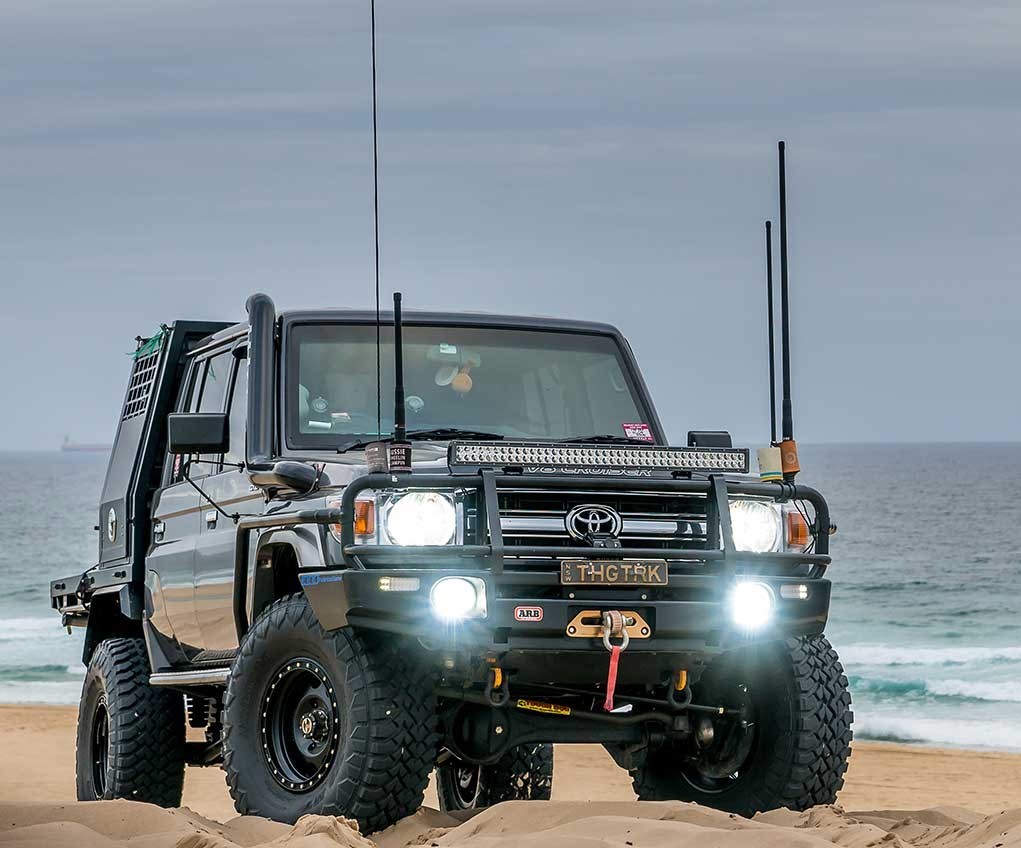
Radio performance is mainly dependant on the antenna, which is why a 5-watt handheld radio with a low antenna won't perform like an in-car five-watt unit with its higher antenna.
The location of the antenna is fundamental to its performance. Ideally, it would go on the roof rack or gutter, but the bull bar works too.
A taller antenna is not necessarily better. Tall antennae are high gain which means they can transmit a long way, but only in a narrow band.
Shorter antennas are low gain, which means their transmissions are wider but don't travel as far.
Think of a doughnut, either squashed flat or normally shaped. An eight dBd (decibel relative to unity) is high gain, one dBd is low gain, and three to four is middle of the range. You can learn more by exploring the antennas's range from Oricom
Repeaters
Repeaters are base stations that look for signals on channel 1-8 and automatically re-transmit them a long way on channels 31-38.
Useful but avoid channels one to eight unless you actually mean to use a repeater.
AM CB radios
AM CB radios are the same as UHF, except they operate on a different frequency.
They are not used much nowadays as UHF is far clearer. However, AM often has a range advantage, and with so few people on it, less clutter.
Satellite phones
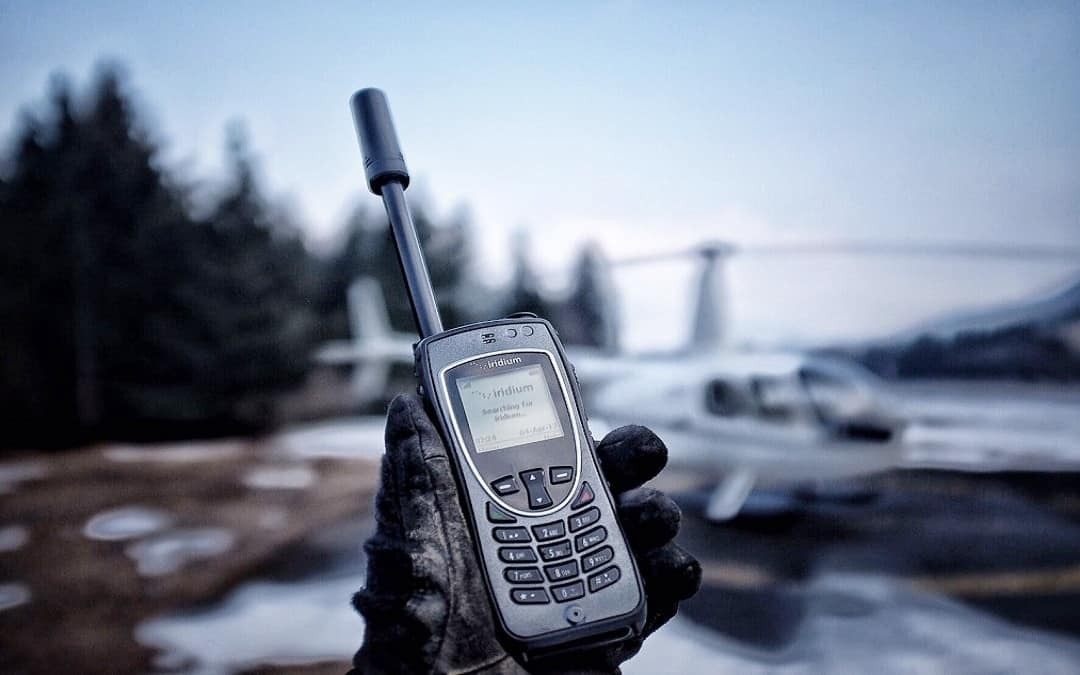
When offroading, you may run into situations where you must talk to an expert or the authorities.
You might have a life-threatening injury on your hands, a dead vehicle that you are unable to fix or be cornered by impassable roads with supplies running out.
For others, communication is more ordinary: many people conduct business remotely and being contactable can mean the difference between a holiday going ahead or not. Or perhaps you are waiting on really important news but don't want to delay a trip.
So there is a case for remote area communications, and one of the most common solutions is a satellite phone, or satphone, as it's highly portable and easy to use.
So what is a satphone?
Everyone knows what conventional mobile is - one that works on the GSM network - but perhaps not how it works.
The GSM network is a series of radio base stations all over the country with a typical range of around 30km. Your mobile is a radio transmitter/receiver and has adequate power to transmit your call to the nearest base station. From there, it hooks into the national telephone network and thus the world.
The limitation is that you need to be close to a base station, which won't help for outback travel, and the signal doesn't pass through or over hills, in part because it is broadcast from terrestrial stations.
Products like these Mobile Phone Signal Repeater Boosters help reduce call drop outs, improve cellular coverage in remote areas, and improve download speed so they come in very handy!
Anyway; satphones operate much the same way, but their base stations are satellites. While the satellites can see a large part of the earth, not all satphones systems have truly worldwide coverage.
Just because you have a satphone doesn't mean to say you'll be able to get assistance. If you need to make an emergency call, chances are you'll want to do so quickly, and the situation will be stressful.
You may also be struggling with battery life, noisy weather, service dropouts and limited time. The call needs to be quick and to the point, so get prepared. If you need to leave a message, don't assume you will be understood:
- Please send a text, too (and don't assume that will get through).
- Repeat yourself on any message.
- On any message, repeat yourself.
- When leaving a message, repeat it.
Adding a 12V adaptor and external antenna means no worries about battery life - then you can sit inside a comfortable, quiet car to make the call rather than battle the elements (a satphone doesn't work well inside a vehicle without an external antenna as it cannot easily see its satellites)
Make a list of emergency numbers, and more than one friend who you know can be trusted in an emergency. Then work out what you'll be likely to be saying. Here is an example list of information to leave and to take with you on a laminated card.
- Full names of everyone at the party
- Pertinent medical details (blood type, special conditions, medicare)
- Next of kin and emergency contact
- Vehicle make, model, colour and description
- Intended routes and times
This list is what authorities will want to know
- Who are the people (number, injuries)
- What the problem is
- Where you are (coordinates, track name/how far along)
- Food, water, shelter situation
- Your intended plans, what you have done and what you need
Some examples of numbers to take:
- Local police
- RFDs
- Trusted friends (who have your travel details already)
- Your friendly 4wd mechanic (ask before you leave)
- Rangers
Finally, please do not consider a satphone as a get out of jail free card that substitutes for careful planning, training and quality equipment. Note that satphones should be able to call 112, the international emergency number, with or without a plan or SIM.
Can anyone make the call?
While satphones resemble mobile phones, they don't work like mobile phones.
As satphones are often carried for emergency purposes, the people making the calls may be scared, in adverse weather conditions and unfamiliar with satphones.
Could they still make an emergency call? We recommend not only familiarising everyone in your party with the phone but also including two copies of clear written instructions describing how to make an emergency call and turning all PIN codes and the like off.
Storing everything in a small camera bag is a good idea, too, but make sure it's easily accessible should you need to exit the vehicle in a hurry
HF Radio
High-frequency (HF) radio is similar to UHF but with a much longer range.
That means you can talk to anyone from anywhere, but you do need a licence. The units are relatively expensive at around $2000+ and not very portable.
Vehicle-mounted radio kits could be damaged by fire or rollovers, whereas handset satphones are less vulnerable and more portable.
The good thing about HF is you become part of a travelling community, not just talking one-to-one as you would with a satphone, and there is no usage fee.
You can talk to people further up the track, for example. HF is free to use, and you can broadcast and listen in to the "skeds" or scheduled information services.
Distress beacons
What they are
When things turn desperate (like in life danger situations) and you are far away from normal communication channels, you will need help. What to do? A distress beacon could be the answer.
There are small, tough devices that, when set off, broadcast a radio signal to the rescue authorities, who will respond and assist.
Be clear about their use; beacons are to be used only "when there is a threat of grave or imminent danger", and other communications methods have been exhausted.
When you set one off, search, and rescue (SAR) teams are going to leap into action. This costs a lot of money, but more importantly, there are only so many SAR teams, and you don't want them turning up to a non-serious situation when they should be attending a real emergency.
Beacon communications are very simple, just a distress signal and maybe coordinates. There is no way to say what the problem is, on any two-way communication, unlike a satphone or HF radio.
That said, the simplicity of a beacon is its strength. They are much cheaper than a satphone, easier to use, there are no ongoing costs, they are small, tougher, more reliable and will work out your position (if fitted with GPS, although they cannot be used for navigation) and they continually transmit it. You could put one in your car and almost forget it exists, just as insurance.
They are a complement to satphones and HF radio, not a replacement, and the reason they exist is to firstly alert the authorities to those in real trouble and then "take the search out of search and rescue."
Types of beacon
There is not just one type of distress beacon, but several, all of which operates on the same basic principle; once activated, they send a distress radio signal until the battery dies.
The first type is an EPIRB, or Emergency Position Indicating Radio Beacon. These are designed to be mounted for vessels for maritime use, float with the antenna upright and operate for at least 48 hours. Some activate on contact with water. Distress beacons are sometimes incorrectly referred to as EPIRBs, and an EPRIB is just one type of distress beacon.
There are ELTs, or Emergency Locator Transmitters used in aircraft and designed to operate on impact, then continue transmitting for at least 24 hours. Most aircraft are required to carry an ELT.
PLBs are Personal Locator Beacons, which, as the name suggests, are small, light, designed to be carried by a person anywhere they may be and are manually activated. They float but are not required to do so with their antenna upright and need only transmit for 24 hours.

Off-roaders should choose between PLBs or EPIRBs. Both will do the job, but cost and size will probably see most opt for PLBs. An EPIRB may be 260x120x83mm and weigh half a kg, whereas a PLB may weigh 250g with dimensions of 135x71x38mm.
That means it is easily slipped into a side pocket of a vehicle or taken on walks or other activities. A PLB will cost a lot less than $1000, or you can hire them.
Australian beacons
You must ensure the beacon you buy is designed for the Australian system; the government organisation in charge of beacons, the Australian maritime safety authority (AMSA), warns against some North American types.
That said, all 406MHzbeacons work everywhere in the world and all work on the same principle.
There are two types of beacon, those on the 121.5MHz frequency and those on 406MHz, but the 121.5MHz types were phased out in February 2009 and should be destroyed by authorised personnel so they cannot be used or send a false alarm.
All 406 MHz units must be registered with AMSA, which cost nothing. Australian units must be coded with the Australian identifier 503, and the contacts given to AMSA must be Australian.
The registration process asks for the unique beacon HEXID or UIN number (printed on the beacon), what make and model it is, your contact details and three emergency contact details.
If applicable, you can fill out vessel or aircraft details or use the Land section to describe your vehicle. If the beacon is set off, the authorities know whose it is, who they are looking for, who to contact and what vehicle you may be. After registration, a confirmation letter with proof of registration sticker will be sent to you. The sticker should be attached to your EPIRB or PLB next to the HEXID already marked on the beacon.
The stickers are valid for two years and provide an easy visual check for authorities to check your beacon is registered.
How beacons work

When activated, the beacon transmits a radio signal, on 406MHz, which contains its ID, to a set of satellites, pulsing the signal at a power of five watts.
These satellites are run by Cospas-Sarsat, an international organisation started by the USA, France, Canada and Russia in 1979.

There are two types, LEOSAR which are in low earth orbit and more relative to the earth, and GEO SAR, which are geostationary, so they don't move relative to the earth.
The two are complementary; for example, as LEOSAR moves, it may be able to get in positions to receive a signal where GEO SAR cannot, but GEO SAR offers immediate pickup.
If you get a GEO SAR satellite, the authorities know about it within 5 minutes, but otherwise, you may need to wait up to an hour for one of the five LEOSAR satellites to come by as they orbit the world once every 100 minutes.
Now there is a quicker and more accurate way to get help; the beacon's exact location can be encoded in the signal. That's pretty simple; just add a GPS receiver to the beacon and once the GPSR acquires a lock, send the coordinates along.
Suppose the beacon is in a clear area. In that case, it'll take a few minutes to acquire a GPS lock, and then you'll get near-instant and exact notification of location (within around 120 metres) to the rescue team who now also have a good idea or what sort of terrain or water you are in even before they depart.
Consider, too, that once the authorities have your coordinated, they will continue to the location and don't require the beacon to transmit it, but leave it on as the homing signal makes it easier for them to find you. All up GPS capability is definitely worth the extra couple of hundred dollars.
Maintaining a beacon
Owning and maintaining a beacon is easy. Please keep it away from magnetic sources, run the self-test as required, check it hasn't been damaged, keep it away from children, keep the registration details updated with AMSA and explain its use to any adults. Call AMSA ON 1800 641 792 immediately if a beacon is accidentally activated; there is no penalty for doing so.
Secure your beacon to avoid hoaxers playing with people lives. Check the battery life, which will be a few years, and when it needs replacing, get it done only by a dealer. Take care of it because one day you may need it.
Conclusion
All Four x 4 Spares stocks a massive range of communication and navigation-related products such as Antennas, Maps, Books & DVDs, UHF & CB Radios, Walkie Talkies from the best brands including Hema Maps, Oricom, CEL-Fi.
If you need any assistance, please do not hesitate to contact our experienced sales team and they will guide you towards choosing the right product for your needs.


